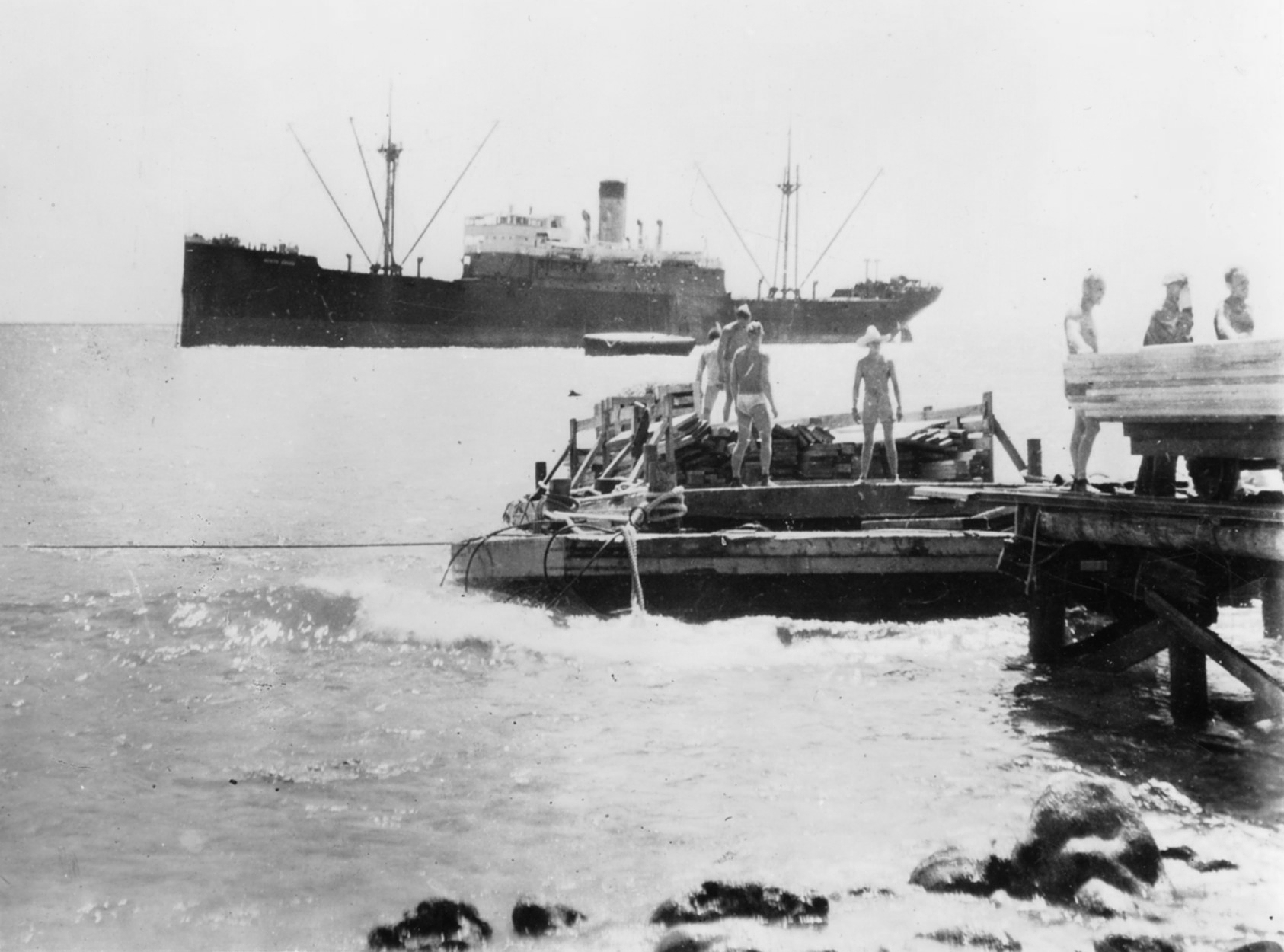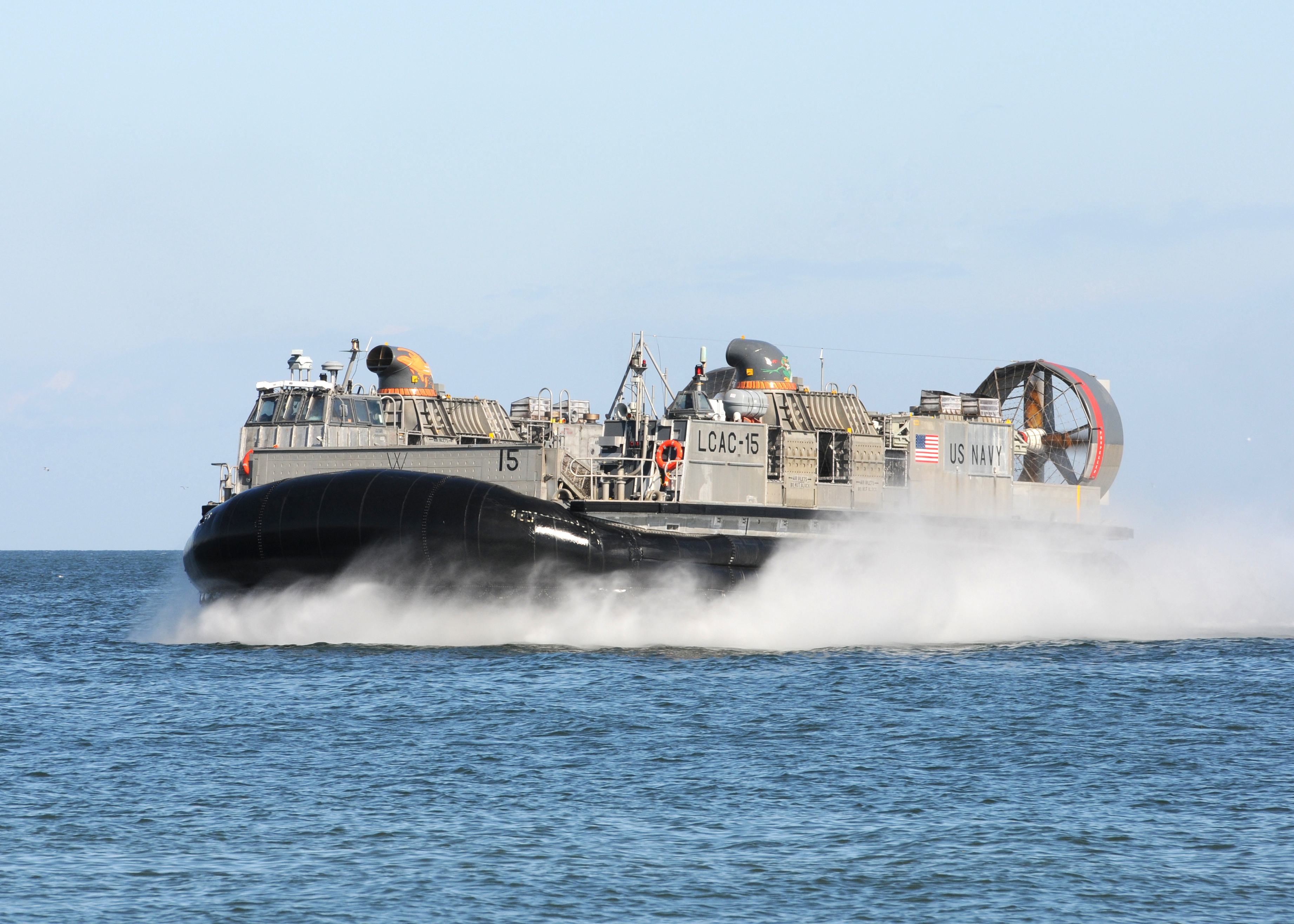|
Naval Beach Group One
Naval Beach Group One, (NBG-1) is a United States Navy amphibious unit based at Naval Amphibious Base Coronado in Coronado, California. Naval Beach Group Two is its sister unit based at Naval Amphibious Base Little Creek, Virginia. Mission Since its inception 19 July 1948, Naval Beach Group One (NBG-1) and its component commands have participated in a variety of amphibious operations. From the early years of assaults during the Korean and Vietnam conflicts to the modern and technically sophisticated amphibious operations in Somalia and Iraq, the men and women of NBG-1 have served throughout the Pacific and Indian Oceans in support of US policy abroad. Commander, Naval Beach Group ONE (CNBG-1) functions under two distinct missions. During amphibious assaults, he provides personnel to support and operate causeway lighterage, LCACs, LCUs, buoyant ship-to-shore bulk fuel systems, beach traffic control, and beach salvage equipment. The second mission is under the Maritime Preposition ... [...More Info...] [...Related Items...] OR: [Wikipedia] [Google] [Baidu] |
Naval Beach Unit Seven
Naval Beach Unit Seven, (NBU-7) is a United States Navy amphibious unit based at United States Fleet Activities Sasebo in Sasebo, Japan. Mission Naval Beach Unit Seven is a one of a kind Navy command that provides a limited Defensive Combat Operations (DCO) capability in support of Amphibious Operations and Humanitarian Assistance/Disaster Relief efforts (HADR). Using its assigned Landing Craft Air Cushion (LCAC), Landing Craft Utility (LCU) and Beach Party Team (BPT), NBU-7 supports the movement of troops, equipment, vehicles, and supplies from amphibious shipping to beaches around the world. Naval Beach Unit Seven reports to Naval Beach Group 1. History Beachmaster Unit was formed from the Navy Shore Party of World War II. The Shore Party formed the nucleus to which the various land and naval elements were assigned for an operation. The naval elements included the Underwater Demolition Team, a Naval Pontoon Unit, and a Boat Pool. Units called Beach Parties were formed and ... [...More Info...] [...Related Items...] OR: [Wikipedia] [Google] [Baidu] |
Landing Craft Utility
A Landing Craft Utility (LCU) is a type of boat used by amphibious forces to transport equipment and troops to the shore. They are capable of transporting tracked or wheeled vehicles and troops from amphibious assault ships to beachheads or piers. Colombia The Golfo de Tribugá-class landing craft is an LCU developed by COTECMAR for the Colombian National Navy. The vessel class is also known as BDA ( es, Buque de Desembarco Anfibio) and an unarmored version for logistical and humanitarian services has also been developed, known as BALC ( es, Buque de Apoyo Logístico y Cabotaje). Operators *: 5 in service, 1 on order *: 1 in service *: 2 in service France The Engin de débarquement amphibie rapide (EDA-R) landing catamaran or L-CAT, entered service in January 2011. They can carry a main battle tank like other European LCUs but are capable of much higher speeds, up to . Germany Germany has two Barbe-class utility landing craft (Type 520), dating from the mid-1960s, which re ... [...More Info...] [...Related Items...] OR: [Wikipedia] [Google] [Baidu] |
Landing Craft Air Cushion
The Landing Craft Air Cushion (LCAC) is a class of air-cushioned landing craft (hovercraft) used by the United States Navy and the Japan Maritime Self-Defense Force (JMSDF). They transport weapons systems, equipment, cargo and personnel from ship to shore and across the beach. It is to be replaced in US service by the Ship-to-Shore Connector (SSC). Design and development Two prototypes were built; JEFF A by Aerojet General in California, JEFF B by Bell Aerospace JEFF A had four rotating ducted propellers JEFF B had two ducted rear propellers similar to the proposed SK-10 which was derived from the previous Bell SK-5 / SR.N5 hovercraft tested in Vietnam. JEFF B was selected for the LCAC.LCAC U.S. Navy Fact File JEFF A was later modified for Arctic use and deployed in Prudhoe Bay to support offsh ... [...More Info...] [...Related Items...] OR: [Wikipedia] [Google] [Baidu] |
Lighterage
Lightering (also called lighterage) is the process of transferring cargo between vessels of different sizes, usually between a barge (lighter) and a bulker or oil tanker. Lightering is undertaken to reduce a vessel's draft so it can enter port facilities that cannot accept large fully-loaded ocean-going vessels. Lightering can also refer to the use of a lighter barge for any form of short-distance transport, such as to bring railroad cars across a river. In addition, lightering can refer to the process of removing oil or other hazardous chemicals from a compromised vessel to another vessel to prevent an oil spill. History Lightering was practiced for all types of cargo for centuries. Prior to the 19th century introduction of steamships too large to enter some of the ports they intended to serve, in which case lightering became necessary to reduce the vessels' draft sufficiently to enter the port, cargoes ranging from water to ships' stores (food, livestock, misc. supplies), to gun ... [...More Info...] [...Related Items...] OR: [Wikipedia] [Google] [Baidu] |
Indian Ocean
The Indian Ocean is the third-largest of the world's five oceanic divisions, covering or ~19.8% of the water on Earth's surface. It is bounded by Asia to the north, Africa to the west and Australia to the east. To the south it is bounded by the Southern Ocean or Antarctica, depending on the definition in use. Along its core, the Indian Ocean has some large marginal or regional seas such as the Arabian Sea, Laccadive Sea, Bay of Bengal, and Andaman Sea. Etymology The Indian Ocean has been known by its present name since at least 1515 when the Latin form ''Oceanus Orientalis Indicus'' ("Indian Eastern Ocean") is attested, named after Indian subcontinent, India, which projects into it. It was earlier known as the ''Eastern Ocean'', a term that was still in use during the mid-18th century (see map), as opposed to the ''Western Ocean'' (Atlantic Ocean, Atlantic) before the Pacific Ocean, Pacific was surmised. Conversely, Ming treasure voyages, Chinese explorers in the Indian Oce ... [...More Info...] [...Related Items...] OR: [Wikipedia] [Google] [Baidu] |
Pacific
The Pacific Ocean is the largest and deepest of Earth's five oceanic divisions. It extends from the Arctic Ocean in the north to the Southern Ocean (or, depending on definition, to Antarctica) in the south, and is bounded by the continents of Asia and Oceania in the west and the Americas in the east. At in area (as defined with a southern Antarctic border), this largest division of the World Ocean—and, in turn, the hydrosphere—covers about 46% of Earth's water surface and about 32% of its total surface area, larger than Earth's entire land area combined .Pacific Ocean . '' Britannica Concise.'' 2008: Encyclopædia Britannica, Inc. The centers of both the |
Iraq
Iraq,; ku, عێراق, translit=Êraq officially the Republic of Iraq, '; ku, کۆماری عێراق, translit=Komarî Êraq is a country in Western Asia. It is bordered by Turkey to Iraq–Turkey border, the north, Iran to Iran–Iraq border, the east, the Persian Gulf and Kuwait to the southeast, Saudi Arabia to the south, Jordan to Iraq–Jordan border, the southwest and Syria to Iraq–Syria border, the west. The Capital city, capital and largest city is Baghdad. Iraq is home to diverse ethnic groups including Iraqi Arabs, Kurds, Iraqi Turkmen, Turkmens, Assyrian people, Assyrians, Armenians in Iraq, Armenians, Yazidis, Mandaeans, Iranians in Iraq, Persians and Shabaks, Shabakis with similarly diverse Geography of Iraq, geography and Wildlife of Iraq, wildlife. The vast majority of the country's 44 million residents are Muslims – the notable other faiths are Christianity in Iraq, Christianity, Yazidism, Mandaeism, Yarsanism and Zoroastrianism. The official langu ... [...More Info...] [...Related Items...] OR: [Wikipedia] [Google] [Baidu] |
Somalia
Somalia, , Osmanya script: 𐒈𐒝𐒑𐒛𐒐𐒘𐒕𐒖; ar, الصومال, aṣ-Ṣūmāl officially the Federal Republic of SomaliaThe ''Federal Republic of Somalia'' is the country's name per Article 1 of thProvisional Constitution, (; ), is a country in the Horn of Africa. The country is bordered by Ethiopia to the west, Djibouti to the northwest, the Gulf of Aden to the north, the Indian Ocean to the east, and Kenya to the southwest. Somalia has the longest coastline on Africa's mainland. Its terrain consists mainly of plateaus, plains, and highlands. Hot conditions prevail year-round, with periodic monsoon winds and irregular rainfall. Somalia has an estimated population of around million, of which over 2 million live in the capital and largest city Mogadishu, and has been described as Africa's most culturally homogeneous country. Around 85% of its residents are ethnic Somalis, who have historically inhabited the country's north. Ethnic minorities are ... [...More Info...] [...Related Items...] OR: [Wikipedia] [Google] [Baidu] |
Virginia
Virginia, officially the Commonwealth of Virginia, is a state in the Mid-Atlantic and Southeastern regions of the United States, between the Atlantic Coast and the Appalachian Mountains. The geography and climate of the Commonwealth are shaped by the Blue Ridge Mountains and the Chesapeake Bay, which provide habitat for much of its flora and fauna. The capital of the Commonwealth is Richmond; Virginia Beach is the most-populous city, and Fairfax County is the most-populous political subdivision. The Commonwealth's population was over 8.65million, with 36% of them living in the Baltimore–Washington metropolitan area. The area's history begins with several indigenous groups, including the Powhatan. In 1607, the London Company established the Colony of Virginia as the first permanent English colony in the New World. Virginia's state nickname, the Old Dominion, is a reference to this status. Slave labor and land acquired from displaced native tribes fueled the ... [...More Info...] [...Related Items...] OR: [Wikipedia] [Google] [Baidu] |
Naval Amphibious Base Little Creek
A navy, naval force, or maritime force is the branch of a nation's armed forces principally designated for naval and amphibious warfare; namely, lake-borne, riverine, littoral, or ocean-borne combat operations and related functions. It includes anything conducted by surface ships, amphibious ships, submarines, and seaborne aviation, as well as ancillary support, communications, training, and other fields. The strategic offensive role of a navy is projection of force into areas beyond a country's shores (for example, to protect sea-lanes, deter or confront piracy, ferry troops, or attack other navies, ports, or shore installations). The strategic defensive purpose of a navy is to frustrate seaborne projection-of-force by enemies. The strategic task of the navy also may incorporate nuclear deterrence by use of submarine-launched ballistic missiles. Naval operations can be broadly divided between riverine and littoral applications (brown-water navy), open-ocean applications ( b ... [...More Info...] [...Related Items...] OR: [Wikipedia] [Google] [Baidu] |
Naval Beach Group Two
Naval Beach Group Two, (NBG-2) is a United States Navy amphibious unit based at Naval Amphibious Base Little Creek, Virginia Beach, Virginia. Naval Beach Group One is its sister unit based in Naval Amphibious Base Coronado in Coronado, California. Mission Since its inception 19 July 1948, Naval Beach Group TWO (NBG-2) and its component commands have participated in a variety of amphibious operations. Commander, Naval Beach Group TWO (CNBG-2) functions under two distinct missions. During amphibious assaults, they provide personnel to support and operate causeway lighterage, LCACs, LCUs, buoyant ship-to-shore bulk fuel systems, beach traffic control, and beach salvage equipment. The second mission is under the Maritime Preposition Force (MPF) concept which uses the equipment and supplies prepositioned on board forward deployed Maritime Prepositioning ships (MPS). Joining forces with the Marine Expeditionary Brigade (MEB), CNBG-2 forms and commands the Naval Support Element (NS ... [...More Info...] [...Related Items...] OR: [Wikipedia] [Google] [Baidu] |





.jpg)


